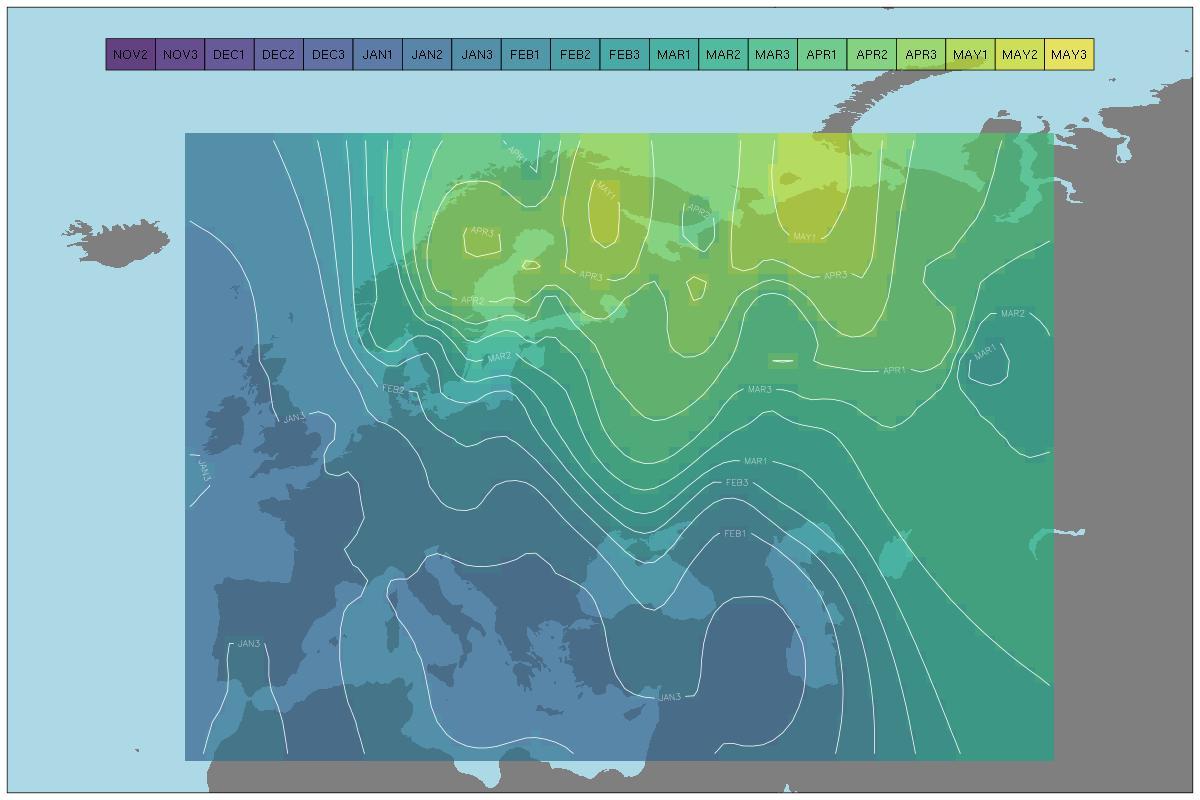Franz Bairlein, Frank Mattig and Roberto Ambrosini
Institute of Avian Research, Wilhelmshaven, Germany
University of Milan, Milan, Italy
The Key Concept of Article 7(4) of the Birds Directive 79/409/EEC is to “present information on the timing of the reproduction period and of prenuptial migration (return to the breeding areas) for bird species listed on Annex II of the Directive on the conservation of wild birds (79/409/EEC) occurring in EU28.” Annex II species may be hunted under national legislation but not so during their period of reproduction and, in migratory species, during their return migration to their rearing grounds. Therefore, proper knowledge of the timing of prenuptial migration is essential and data of individually marked birds can provide this information.

Material and Methods
To analyse the timing of prenuptial migration we made use of the many recoveries of ringed birds harbored by the European Union for Bird Ringing (EURING) databank (EDB).
The analysis used two different methodological approaches:
- the analysis of the movements in space and time of each individual bird that got ringed and later recovered, dead or alive.
- modelling the spatial and temporal course of return migration by taking any encounter of a ringed and/or recovered bird in a given geographical area into account. For details of both methodologies see the att. “Report”.
In short: For assessing the timing of pre-nuptial migration by the use of recoveries we used only recoveries of birds moving northbound in a direction between 315-135° because in Europe return migration movements are mostly directed north, northeast or northwest. Furthermore, of these recoveries only those were further used that moved at least 100 km northbound. To evaluate the seasonal course of northbound pre-nuptial (return) migration we considered only those recoveries which were recovered within the first 16 10-days periods (decades) of a year, which cover the period between 1 January and 31 May. Moreover, for a geographical scope we grouped countries to regional units.
For modelling the progression of bird migration we used conditional autoregressive models as described in Ambrosini et al. (2014) [please link https://journals.plos.org/plosone/article?id=10.1371/journal.pone.0102440) modified as described in details in the full Report (link). This approach calculates the proportion of encounters that occur in a location in different times of the year, and uses any encounter of a ringed bird and/or recovered bird.
Comparing these independent methods revealed very similar results underpinning the validity of both. While the results of the recovery-approach are affected by sample size the modelling enables a more robust assessment of migration movements with higher spatial resolution.
Results
Of the total 80 species listed in Annex II of the Bird Directive as huntable in Member States 79 have entries in the EURING databank but only 57 species provided sufficient data for either recovery analysis and/or mapping of onset of pre-nuptial migration. In 22 species, neither recovery analyses nor mapping could be conducted because of lack of data.
For each species with sufficient recovery data in at least one geographical region or with sufficient data for the mapping we provide standardized figures and maps as illustrated here in Eurasian Teal Anas crecca.
As to the analysis of recoveries of ringed birds in the SW of Europe (Iberian Peninsula and S-France) teals start their northbound migration as early as the beginning of the year (Figure 1). This is confirmed by the modelling and mapping analysis which also shows that teals start their prenuptial migration in the SW of Europe in early January (Figure 2).

| Attachment | Size |
|---|---|
| Analysis of the current migration seasons of hunted species - Full Report (20.11 MB) | 20.11 MB |